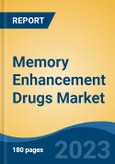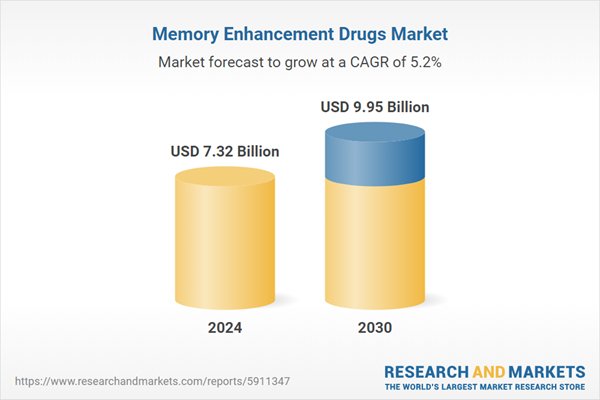Speak directly to the analyst to clarify any post sales queries you may have.
10% Free customizationThis report comes with 10% free customization, enabling you to add data that meets your specific business needs.
Key Market Drivers
1. Aging PopulationThe aging global population is a significant driver in the memory enhancement drugs market. As individuals age, they become more susceptible to cognitive decline and neurodegenerative diseases such as Alzheimer's and dementia, increasing the demand for memory-enhancing solutions.
Rising Proportion of Elderly:
The demographic shift toward an aging population is a key factor propelling the demand for memory enhancement drugs. This shift is attributed to lower birth rates and higher life expectancy. According to the World Health Organization, by 2050, the global population aged 60 and above is expected to double to 2.1 billion, with the number of people aged 80 and older tripling from 2020 to 2050, reaching 426 million.Key Market Challenges
1. Regulatory and Safety ConcernsA significant challenge facing the market is the lack of sufficient scientific evidence supporting the long-term safety and efficacy of many memory enhancement drugs. Numerous products, especially those marketed as over-the-counter supplements or off-label drugs, do not undergo rigorous clinical trials to validate their claims.
Regulatory Gaps:
In many regions, inadequate regulation allows certain products to enter the market without comprehensive testing or quality control. This exposes consumers to potential risks from ineffective or harmful substances. The lack of sufficient regulation also results in insufficient consumer awareness regarding potential risks, leading to misuse or adverse effects.Key Market Trends
1. Growing Focus on Cognitive Health and WellnessThere is a noticeable shift towards preventive healthcare, with an increasing emphasis on maintaining cognitive health throughout life. As people become more aware of the importance of cognitive function for overall well-being, they are actively seeking ways to optimize memory, mental clarity, and brain health at all stages of life. This shift has led to greater interest in both traditional and innovative methods for enhancing cognitive performance.
- A 2021 study involving 44 healthy participants aged 18 to 36 showed that those who took prucalopride performed significantly better in memory tests compared to a placebo group. Functional MRI scans revealed enhanced brain activity, particularly in regions related to memory, including the hippocampus and the right angular gyrus.
Key Market Players
- Pfizer Inc.
- UCB S.A.
- Takeda Pharmaceutical Company Limited
- SANOCHEMIA Pharmazeutika GmbH
- AbbVie Inc.
- Novartis AG
- Alkem Laboratories Ltd.
- Intas Pharmaceutical Ltd.
- Otsuka Holdings Co., Ltd.
Market Segmentation
The Global Memory Enhancement Drugs Market is segmented as follows:
1. By Drug Class- Cholinesterase Inhibitors
- Smart Drugs and Cognitive Enhancers
- Vitamins and Supplements
- Others
- Oral
- Injectable
- Topical
- Hospital Pharmacy
- Retail Pharmacy
- Online Pharmacy
- North America
- United States
- Canada
- Mexico
- Asia-Pacific
- China
- India
- South Korea
- Australia
- Japan
- Europe
- Germany
- France
- United Kingdom
- Spain
- Italy
- South America
- Brazil
- Argentina
- Colombia
- Middle East & Africa
- South Africa
- Saudi Arabia
- UAE
Competitive Landscape
The report provides detailed analysis of the major players in the global Memory Enhancement Drugs Market.Available Customizations
TechSci Research offers customization options for this report, including the following:
Company Information:
In-depth profiling of additional market players (up to five).This product will be delivered within 1-3 business days.
Table of Contents
Companies Mentioned
- Pfizer Inc.
- UCB S.A.
- Takeda Pharmaceutical Company Limited
- SANOCHEMIA Pharmazeutika GmbH
- AbbVie Inc.
- Novartis AG
- Alkem Laboratories Ltd.
- Intas Pharmaceutical Ltd.
- Novartis AG
- Otsuka Holdings Co., Ltd.
Table Information
| Report Attribute | Details |
|---|---|
| No. of Pages | 183 |
| Published | February 2025 |
| Forecast Period | 2024 - 2030 |
| Estimated Market Value ( USD | $ 7.32 Billion |
| Forecasted Market Value ( USD | $ 9.95 Billion |
| Compound Annual Growth Rate | 5.2% |
| Regions Covered | Global |
| No. of Companies Mentioned | 10 |









